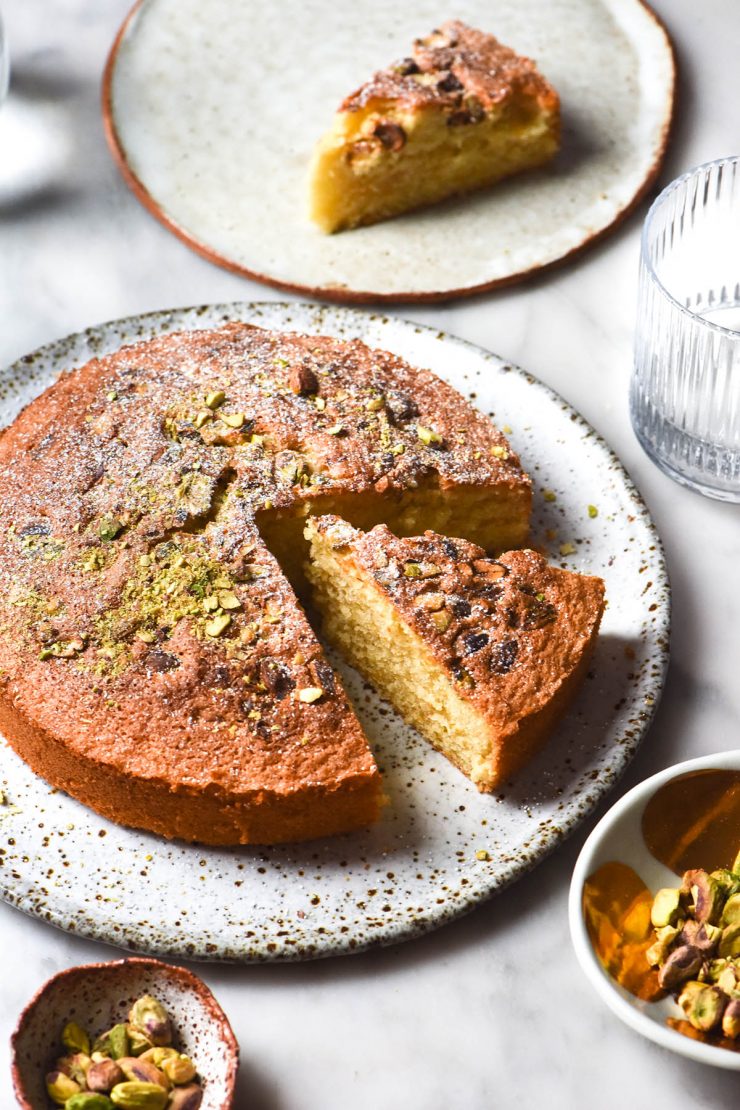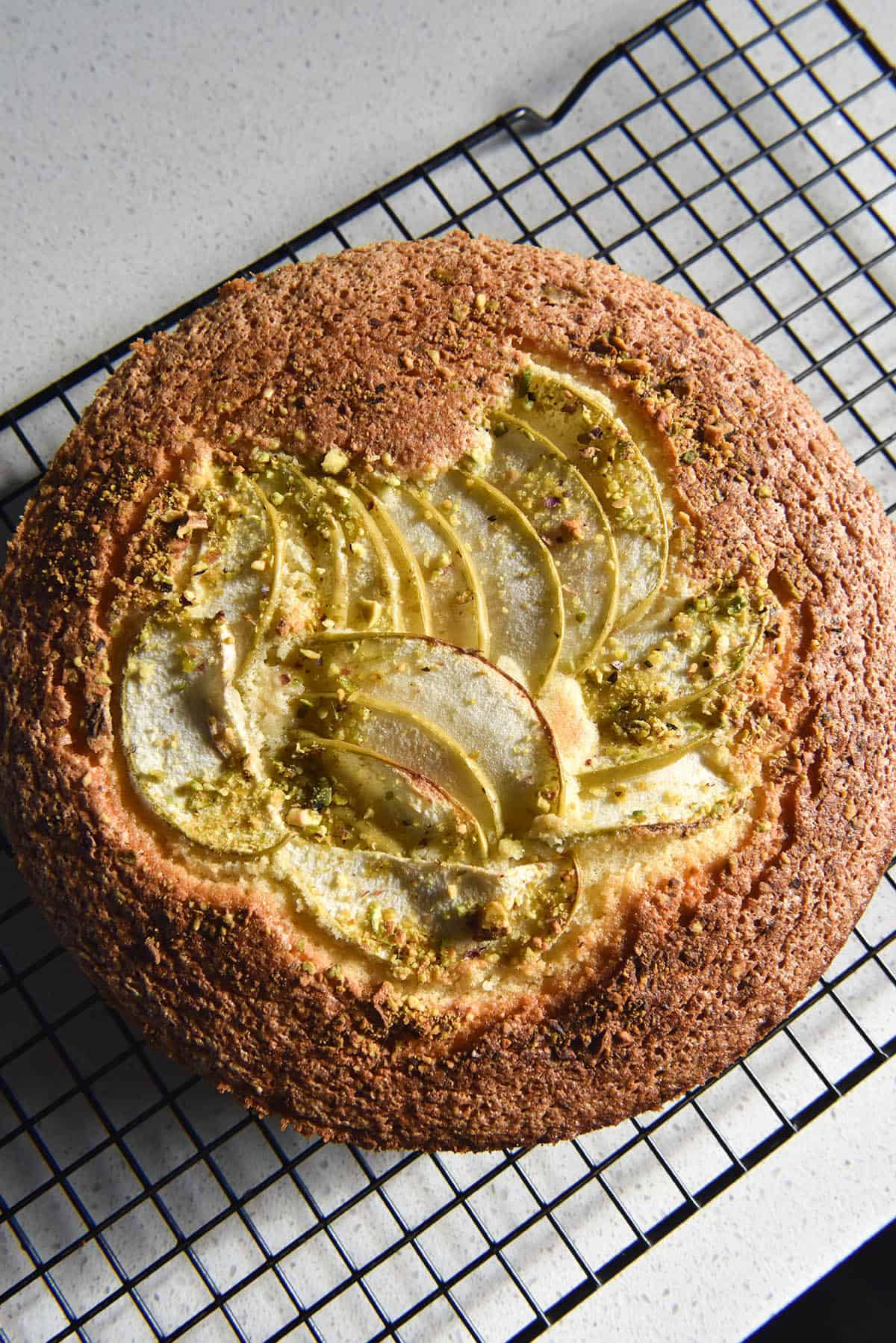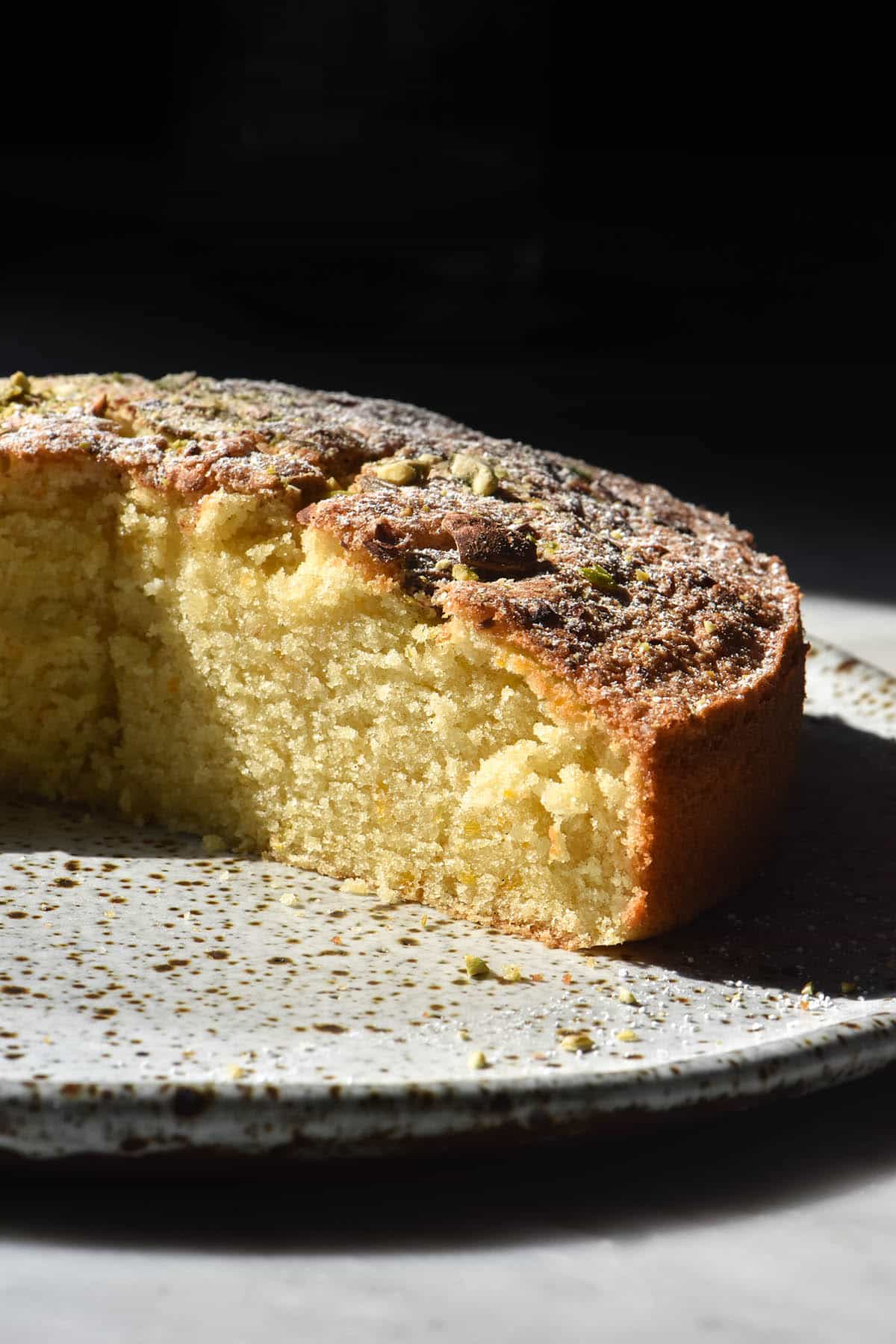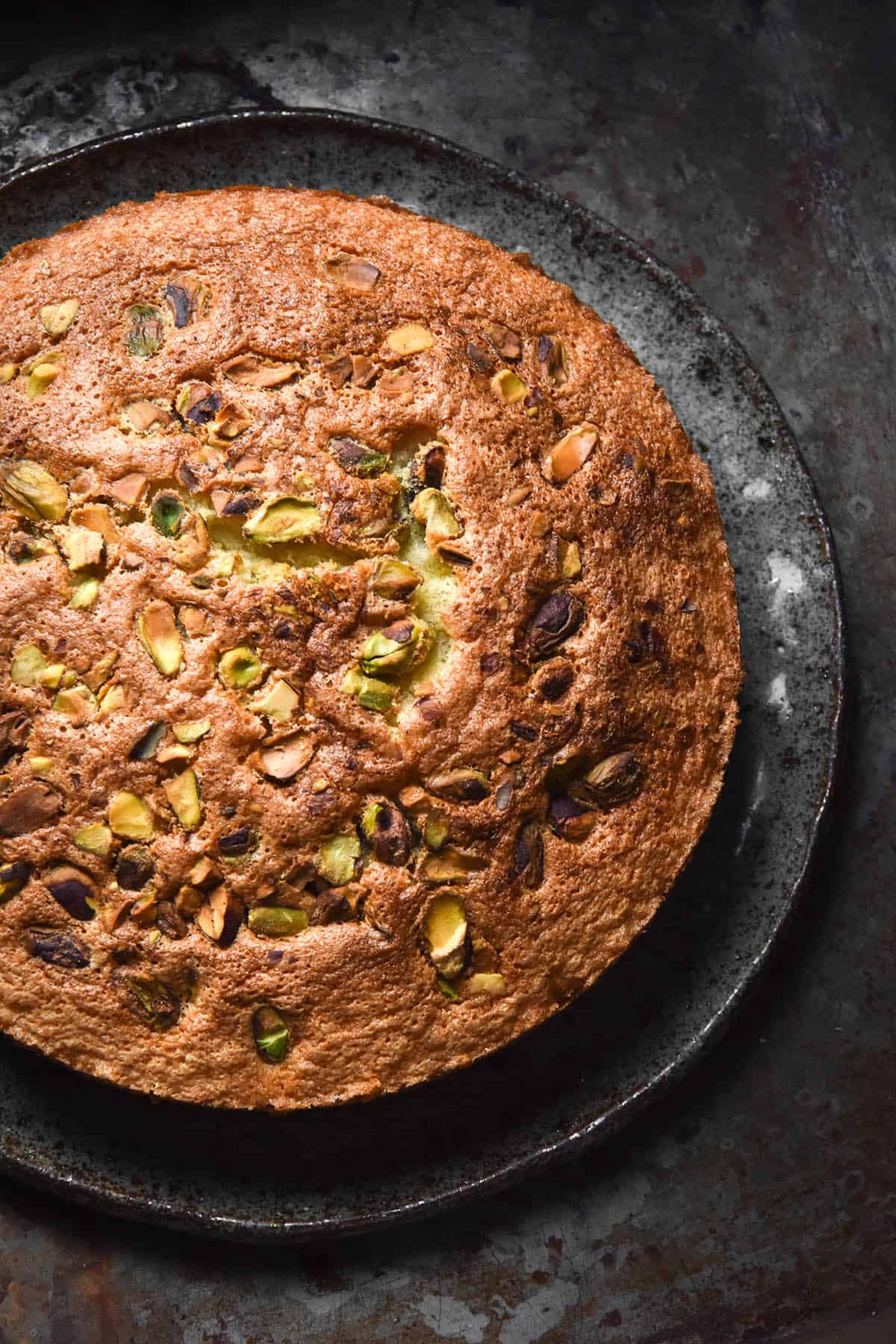
This gluten-free olive oil cake is a recipe I have been tinkering with for a while now. As a classic recipe, I wanted to make sure I did it justice. This recipe hits all the right notes for me: light, airy and sweet but punctuated with herbaceous olive oil and a hint of lemon. Sophisticated and allergy friendly to boot.

Gluten-free olive oil cake
This olive oil cake is light and airy yet rich and delicious. It is naturally dairy free and also gluten free (obviously!). I choose to make most of my desserts without xanthan gum because it doesn’t agree with me. As such, this gluten-free olive oil cake is xanthan gum free, too.
What I love about this recipe is that the cake is really customisable. You can top it with berries, sliced apple (not low FODMAP) or leave it plain. It works equally as well with a neutral oil such as vegetable for a mild and sweet tea cake style cake.

Tips for your gluten-free olive oil cake
My number one tip for any cake recipe is to try as hard as possible to use the cake tin size specified. I have had a few people come to me confused as to why their cake didn’t work, only to find they used a 28cm cake tin instead of a 20cm. A larger cake tin means a thinner, flatter cake that is more likely to burn in the specified time.
On the contrary, a smaller cake tin means the cake will take longer cook, and might be too brown on the outside by the time the inside is cooked through. So, my number one tip is to use the specified cake tin size where possible.
Another tip is on the topic of creaming. In this recipe, the oil, sugar and and eggs are creamed (beaten) together until light and fluffy and increased in volume. This process is responsible for creating air in the cake which helps retain the oil. If you don’t cream your ingredients sufficiently, you will end up with a dense and oily cake.

What should I top my gluten-free olive oil cake with?
The sky is the limit with topping this olive oil cake. Some suggestions:
A handful of berries in the batter or on top of the cake after baking
Thinly sliced apple or pear and chopped pistachios
A simple lemon icing, as in my banana cake recipe
A lighter style creamy icing, such as whipped mascarpone or ricotta (lactose free recipes linked)
Citrus fruit or sliced banana (you could also make this in an upside down cake style)

More gluten free cake recipes without xanthan gum
- My easy chocolate cake
- The gluten free and vegan chocolate cake from Intolerance Friendly Kitchen
- This single flour lemon drizzle cake
- This banana cake (which is vegan with the lemon icing option)
- Chocolate olive oil cake

Gluten free olive oil cake
Equipment
- 1 X 20cm (8 inch) cake tin (not springform)
Ingredients
- 160 g (1 cup)* fine white rice flour
- 50 g (1/2 cup)* almond meal (see notes)
- 30 g (1/4 cup)* tapioca flour
- 5g (1 1/4 teaspoons)* baking powder
- pinch of fine salt
- Zest of 1 lemon
- 145ml (1/2 cup + 1 tablespoon)* olive oil
- 2 extra large eggs (45-55g per egg, weighed out of shell)
- 175 g caster or superfine sugar
- 1 teaspoon vanilla bean paste
- 170ml (2/3 cup)* milk of choice
Instructions
- Preheat the oven to 180C/356F. Grease and line a 20cm cake pan (not a spring form as the batter is on the thinner side).
- In a medium mixing bowl, whisk the flours and almond meal with the baking powder, salt and lemon zest. Set aside.
- Add the oil, eggs, sugar and vanilla bean paste to a medium bowl or the bowl of your stand mixer. Use hand beaters or the whisk attachment to cream the mixture until pale in colour and light and fluffy in texture. It should have grown in volume and look aerated. This will take 2-3 minutes.
- Add in a quarter or so of the flour, and beat on low to combine. Add a quarter or so of the milk and beat until combined. Continue this pattern until you have used all the ingredients, finishing with flour. The batter should be quite thin – about the consistency of a thinner custard.
- Pour the batter into the prepared cake tin. If you’re adding some fruit, add it gently now. I found that berries tend to sink, whereas thinly sliced apple stayed afloat.
- Bake the cake for 30-40 minutes (toppings dependent) or until golden brown and cooked through. Cakes with a top layer of fruit will take longer than plain cakes. You can lightly tent the cake with foil if it is taking on too much colour.
- Once cooked, allow the cake to cool before running a knife around the edge. Gently invert the cake from the tin, peel off the cake liner and place it on a cooling rack to cool. Serve warm or cooled. Leftovers keep well in an airtight container on the bench.
Notes
- To make a nut free cake, use 50g tapioca flour in place of the almond meal, for a total of 80g of tapioca flour.
- Use a plant based milk of choice for a dairy free cake, or lactose free full cream milk for a lactose free cake.

Georgia,
Thank you so very much for this is an amazing cake.
It worked perfectly first time and was a lovely for dessert last night.
I did not have Tapioca Flour so used Buckwheat instead.
I’m so glad you enjoyed it Helen! Thanks for letting me know it works with buckwheat too, that is great to know 🙂
This cake is fab. Thank you so much! It Turned out perfectly on the first try. I used a scale to measure the dry ingredients as i am in the US. I did not top it with anything although next time i will try pistachios.
How would i add a little more lemon flavor? Zest of another lemon? Lemon flavoring? Lemon juice? I was afraid to add the juice of the lemon in the event it would change the texture/baking of the cake.
Also thinking to make it with orange next time.
So glad you enjoyed it Michelle!
You could definitely add some lemon zest in the batter. I wouldn’t add lemon juice to the batter itself (you’re right, it would likely throw off the texture) but you could top the cake with a lemon and icing sugar glaze or use a lemon syrup to soak into the cake.
The general ideas and methods for each are in this lemon drizzle post: https://georgeats.com/recipes/gluten-free-lemon-drizzle-cake-fodmap-friendly-nut-free-no-xanthan-gum/
Let me know if you try it! 🙂
Hi,
May i use corn starch or potatoe starch to replace 1/2 from the 80g tapioca starch ?
I haven’t tried this and don’t regularly bake with corn starch so I can’t say if it would work, sorry!
As for potato, I find it to be quite dry and I don’t think it would be suitable here